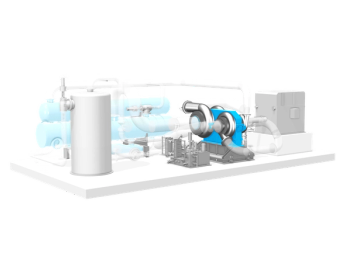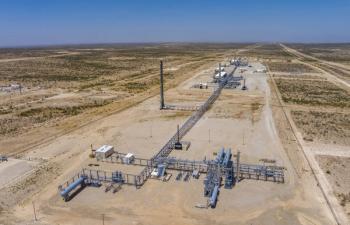
Curtiss-Wright, Sintavia Provide Additively Manufactured Impeller for U.S. Navy Submarine
Curtiss-Wright and Sintavia’s additively manufactured metal impeller design was installed in the submarine pump system of a Navy vessel and tested at a facility in Bethlehem, PA.
Curtiss-Wright’s Electro-Mechanical Systems business supplied the U.S. Navy with an additively manufactured submarine impeller, assembled into a pump system and tested at its facility in Bethlehem, PA. The company’s Engineered Pump Division (EPD), Bechtel Plant Machinery (BPMI), and Sintavia developed, manufactured, tested, and supplied the component comprised of qualified metal. Sintavia conduced qualification tests before delivery to the U.S. Navy.
“Sintavia is a valuable industry partner, and we are excited about the opportunity to further solidify our partnership by increasing the number of additively manufactured parts for this application and other critical naval defense components,” said David Micha, Sr. Vice President and General Manager of the EMS Division. “In addition, we are proud to be providing the first critical service equipment utilizing an additively manufactured component to the U.S. Navy’s submarine program and look forward to expanding these capabilities in the future to more efficiently serve our customer.”
Technology Advantages
Additive manufacturing technology offers quicker manufacturing lead times, higher quality, lower risk of performance failures, and faster delivery to satisfy U.S. Navy requirements, providing a reliable and quality domestic source. These features address the frequent delays associated with difficult or costly to manufacture and develop components and products.
“We would like to thank both Curtiss-Wright and BPMI for the opportunity to leverage Sintavia’s additive technology in the production of this critical component,” said Lindsay Lewis, Sintavia’s Corporate Vice President. “Manufacturing processes such as additive manufacturing will continue to be key differentiators in developing superior defense components in the years to come.”
Additive Manufacturing for Turbo
Klaus Brun, the Director of R&D at Ebara Elliott Energy and Rainer Kurz, Principal of RKSBenergy, spoke about
“About 40 years ago, additive manufacturing technology started coming out based on using materials such as polymers and resins that were heated up and layered on top of each other using some kind of robotic arm or plotter that in the 3D space,” said Brun. “It wasn’t all that relative from a turbomachinery perspective at the time because yes, you could use that to make a mold for a cast, but other than that, it wasn’t realistic. About 20 years ago, we started seeing additive manufacturing using metals. There are a number of techniques, but the most popular ones are direct metal sintering or selective metal-laser sintering—these techniques are when you have a layer of metal and a heat source, and you put the heat source on the powder-metal layer to create a 3D geometry in 3D space. That technique has developed over the last 20 years—it came out with lots and lots of promises, some of which held up while other promises didn't hold up."
Brun says that standard turbomachinery pieces aren’t typically created with additive manufacturing, but certain pieces with intricate geometries may leverage it for customization. In theory, impellers for centrifugal compressors can be built with additive manufacturing, offering the potential to build customer parts.
Dr. Mike Shepard, Vice President of Aerospace and Defense at
“You get design flexibility more than traditional methods,” said Shepard. “However, it's not going to replace things like CNC, but it's going to powerfully complement them. You also get very complicated geometries, which are possible now. And it's easy to incorporate extra complexity like cooling channels for fluid flow. You can also utilize it to combine a bunch of parts into one, which is super advantageous. We've seen examples where people were able to go from 200 components sometimes into one, and you can also iterate very quickly. So, these are the types of advantages that designers really love, On the back end, in the aftermarket/spare parts, it can potentially cut down on your lead time.”
Newsletter
Power your knowledge with the latest in turbine technology, engineering advances, and energy solutions—subscribe to Turbomachinery International today.





